QuestionMy son was begging me for a pet turtle and he picked out a red footed tortoise and named it Frankie Stein ( got it just before halloween) I went in to check on frankie and noticed that it didn't eat his dinner from last nite, so I got out some freash food, cleaned the water bowl and filled it with fresh water. I got frankie and picked him up and he woke up as usual. His eyes stayed closed, not usual, and then I put him in front of his food bowl and he didn't eat but went for the water. He drank alot of water about 2 min. and then moved away from the water bowl and then started throwing up his water that he just drank. he did this 4-5 times and even coughed at the 2nd to last time. Is there anything I can do for him, I am searching for a vet in our area that helps turtles but with no answer. After reading several answers to other questions, I now realize that he needs a bigger tank (1st on my list after hunting a vet down). I don't know much about tortoises please help, My son loves him.
AnswerHi Elaine,
My guess is that you received poor advice from the pet store and have bought equipment you don't need (and not what you do need!). The vomiting could be caused by parasites, but could just be that that tortoise is being kept improperly based on the advice you were given. So let's go over care first.
I highly recommend you get this book: http://www.pingleton.com/redfoot/redfoots.htm It's excellent and will really help you.
First, some general information. Redfoots come from South America, so their moisture needs are fairly high. They are also omnivorous (eat plant and animal material), and grow to a fairly large size; figure 10 to 12", but could even be a bit bigger than that. They are known to be one of the most outgoing, friendly, and curious of the tortoise species.
It sounds like you were sold a tank for your tortoise. Tortoises don't do well in tanks because they can see through them and it's hard to establish a good temperature gradient in them. My guess is that you were also sold a tank that is much too small. Tortoises need a lot of room. At adult size, your redfoot will need something like 4 x 8 at minimum to give him enough roaming room. A juvenile/yearling (about 3-4") will do fine in something like a 50 gallon rubbermaid bin or a 2 x 3 cement mixing tub (Lowe's or Home Depot) for a year or so. Return the tank and get something better.
Substrate needs to hold humidity/moisture well. I use a mix of coir/sand/sphagnum moss. If you raise the enclosure up a bit at one end, you can keep the lower end (warm end) quite boggy and that will keep moisture up. You'll probably have to add water daily. The cooler end can be a little dryer, so the tortoise can choose between warm/wet and cool/dry. One way to tell if the substrate is getting too dry is by checking the tortoise's eyes--if too dry, their eyes will tend to water.
You need a good basking lamp that will provide a basking spot of 90-95 degrees (measured under the lamp on the substrate). The cooler area of the enclosure can be 75-78 degrees. You also need a good UVB bulb. The easiest is to buy a combination heat/UVB bulb (ZooMed Powersun). You can raise or lower the bulb to reach the right temperature.
There should be a water dish large enough for the tortoise to get into and soak. Redfoots like water and sometimes will sit in it for more than an hour, but you should also soak your tortoise two or three times a week for fifteen minutes or so.
Diet should be as much variety as you can manage. Redfoots eat leafy greens, fruit, vegetables, and some animal protein. The base diet should be greens (turnip, collards, mustard, dandelions, spring mix, chicory, plantain, sow thistle, mallow, etc.); add fruit a few times a week (anything but citrus); and veggies two or three times a week (peppers, squash, pumpkin, lightly boiled sweet potato, mushrooms, some carrots--no corn, peas, or beans). Animal protein can be fed once a week or every two weeks (boiled chicken/shrimp/eggs, worms, snails, slugs, mealworms, pinky mice). Avoid commercial tortoise food. A varied, natural diet is best. Also put a cuttlebone in the enclosure so the tortoise can self-regulate calcium intake.
If you give me your general area I can help you locate a vet. I'm also putting some links down below to care information. I wouldn't be too alarmed at the vomiting just yet; the main thing is to make sure he's set up correctly and being fed well. Then if he doesn't improve, it's time to see a vet. Please post back if you have any questions at all!
www.redfoottortoise.com
www.tortoiseyard.com
Hi Elaine,
I live in the Bay Area, too. If you need more help, post back and set it to *private* and I'll give you my email so you can contact me directly. :)

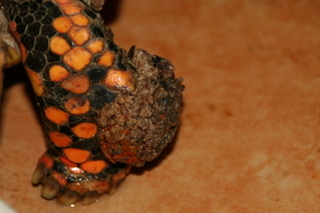 Warts issue
Question
warts issue
Does the attached picture match a
Warts issue
Question
warts issue
Does the attached picture match a
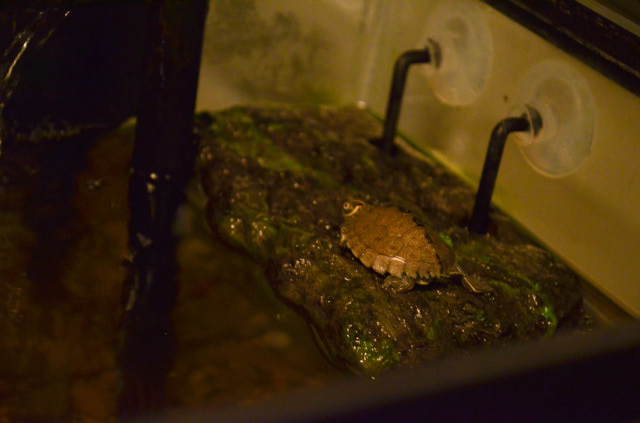 baby RES is lethargic
Question
Baby, "Harry Potter" Malfoy &n
baby RES is lethargic
Question
Baby, "Harry Potter" Malfoy &n
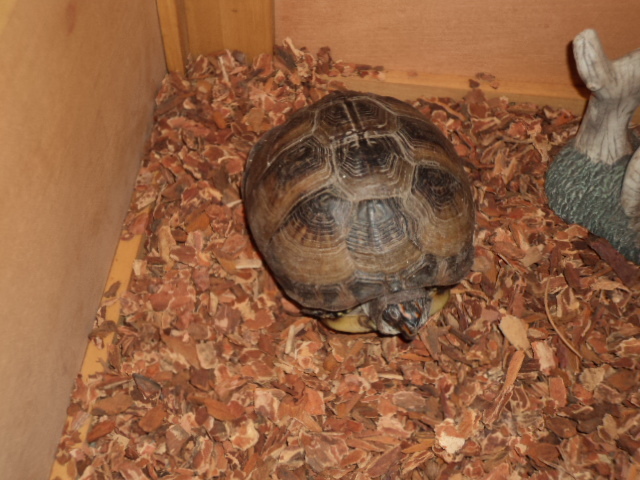 Is this a red ear box turtle?
QuestionWhat kind is this?
QUESTION: dear Jeanni
Is this a red ear box turtle?
QuestionWhat kind is this?
QUESTION: dear Jeanni
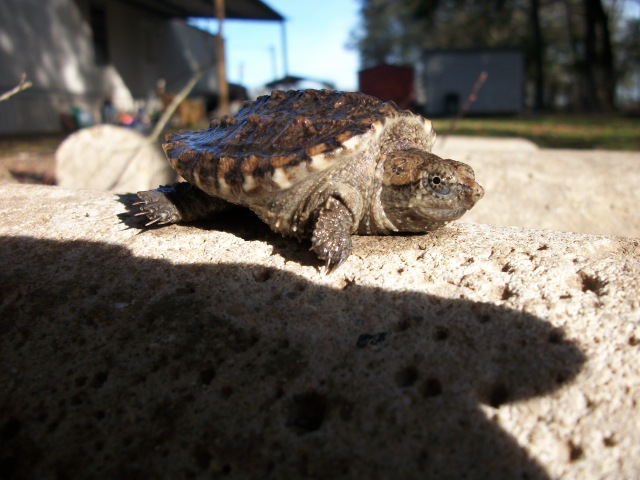 Species identification?
QuestionSnapping Turtle
QUESTION: Can you tell m
Species identification?
QuestionSnapping Turtle
QUESTION: Can you tell m
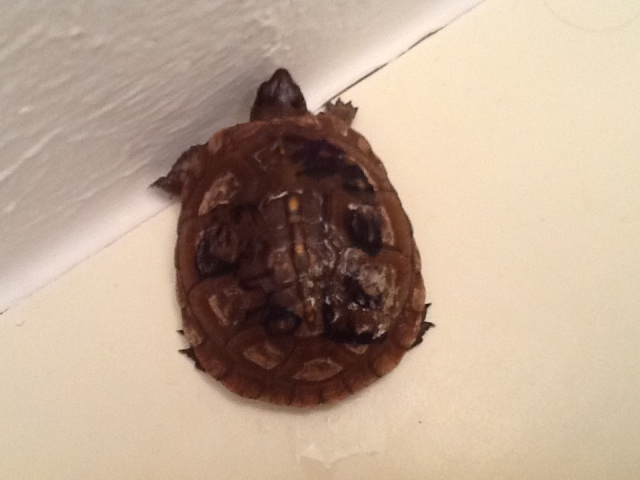 What type of turtle?
QuestionShell
Face
QUESTION: Someone gave
What type of turtle?
QuestionShell
Face
QUESTION: Someone gave